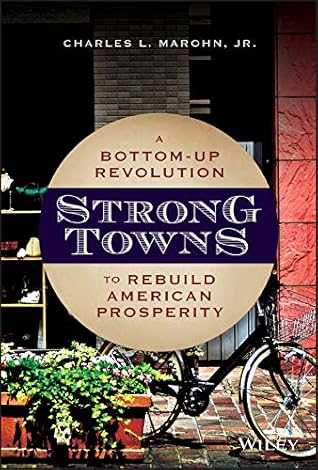More on this book
Community
Kindle Notes & Highlights
Read between
February 21 - February 21, 2020
The few times when I’ve heard members of the Infrastructure Cult pushed to account for infrastructure spending’s return on investment, they always fall back on the assumed secondary benefits. They’ll argue that infrastructure spending makes the economy more efficient, for example, asserting this as de facto truth. The claim isn’t tempered by the fact that nearly every American can point to a local list of wasteful infrastructure projects, investments that cost a lot but didn’t seem to amount to all that much. Somehow building a new frontage road so the Walmart on the old frontage road can be
...more
Rather than producing a multitude of unmeasurable benefits, it is far more likely that our passion for infrastructure spending is satiating a more human instinct. Psychologists call this confirmation bias. We include in our analysis the things that make the case for what we want to do, and we ignore the things that would undermine our cause. In other words, we exhibit cult-like behavior.
Beyond tolls and usage charges, we could extend our infrastructure funding approach to include value capture. This is the approach public and private developers for centuries have used to pay for their projects, from Augustus in Rome and Napoleon in Paris to the trading companies given land charters in the New World. It’s largely how Japan has funded its acclaimed high-speed rail system. Buy the land around the station at pre-development prices. Build the high-speed rail, which makes the land far more valuable. Sell the land at the new price and use the profits from the sale to pay for the
...more
what if we’re in the public sector? And what if, in the infinite game cities are playing, failure on the mundane project means damage to property, dislocation of people, expensive emergency repairs, and potentially even loss of human life? Or what if it merely means the slow decline of the systems the community has built or the ongoing denuding of the community’s wealth and prosperity? We need our best people leading the charge on maintenance.
Part of the unique experience of being in Italy was, of course, the food. The team I was with all ate like royalty. Our various Italian hosts brought us out for what felt like a Thanksgiving-scale meal, twice a day, every day. Later in the trip when I was on my own, I ate an entire pizza every day for dinner and, when I learned the word for “French fries,” added an order of them – fried in exquisite olive oil – to my regular diet. I’ve never eaten so much in a six-week period. The other unique experience for me was walking. I came from a city, in a culture, where a trip longer than a block
...more
This highlight has been truncated due to consecutive passage length restrictions.
Jeff Speck, author of Walkable City: How Downtown Can Save America, One Step at a Time, describes a good walk as one that is “useful, safe, comfortable, and interesting.” As I ponder how these four elements in what Jeff calls his “General Theory of Walkability” apply to my town, I recognize how despotic for people not in an automobile we have made this formerly walkable place. That the change has come at such a great cost to our financial health and prosperity only makes it more disturbing.


